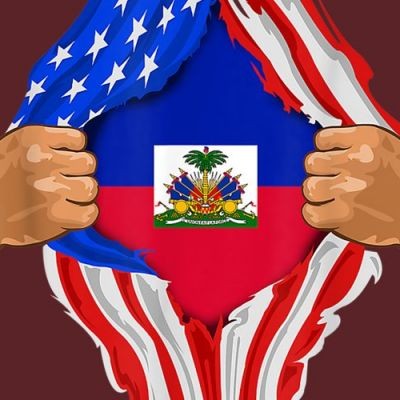1950’S “ BOLD JOURNEY
Want to support this channel and help us preserve old films? Visit https://www.patreon.com/PeriscopeFilm
Visit our website www.PeriscopeFilm.com
This film is a part of the TV travelogue series called “Bold Journey”, which aired on ABC and was hosted by Jack Douglas. The episodes ran from 1956-1959 and were composed of films taken by explorers and adventurers during their travels around the globe. This particular episode features Stanley Dashew as he takes his family on a trip to Haiti to explore the intriguing practice of Voodoo. (Interestingly, Dashew eventually went on to become one of the founders of the plastic credit card companies in the 1950’s.) Haitian Voodoo is a religion derived from slaves which came about between the syncretism between traditional religions of West Africa and Roman Catholicism. The film opens with Jack Douglas (:29) and footage of Haitian natives dancing and conducting voodoo rituals (:46). Stanley Dashew first appears at (1:31) and he discusses how he had first visited Haiti in 1947. The footage he will show is from his return trip in 1949 (1:48). The large schooner he and his family purchased for the film is called the Constellation (2:22). Dashew and his wife are pictured as they debated Dashew selling his business and buying the Constellation in order to take their long voyage (2:45). Their son Steve was to also join the trip (2:49) as well as their three-month-old daughter Leslie (3:33). Scenes from their shove off from port (3:38) lead into footage of the Welland Canal (4:17) which drops ships from Lake Erie to Lake Ontario. From here they traveled through the Lawrence River (4:55). In the gulf of the St. Lawrence, they pass by Bonaventure Island (5:28) as clusters of sea gulls gather on a large cliff side (5:27). The group then hit the Boston harbor and scooped up lobsters (6:11). The New York Harbor follows (6:37) as they headed down towards Miami and on to Cuba (6:52). Dashew is seen dressed as Santa Claus as they would spend Christmas in Cuba (7:18). In Jamaica, they pulled ashore and Steve and his father are seen riding down the Rio Grande on a bamboo raft (8:30). A Jamaican native prepares to skin an alligator alive (9:12). After moving through a storm (9:38), the Constellation arrived in Haiti (11:03) as a parade marches through the city streets (11:14). Dashew informs viewers that upon their first trip, the couple had been informed that they would have another child although they had been recently told by doctors it was not possible (11:52). Later Martha became pregnant with Leslie. Haitians draw a Veve into the ground; specifically, a heart shaped Veve, and these symbols are to correspond to their gods and goddesses (12:09). A small collection of voodoo dolls sits near the Mambo (13:21) whom requested a photograph of the Dashew family. While awaiting the Kanzo ceremony, the family traveled to the other side of Haiti (14:24). Sculptures are viewed here which had been a part of an international fair (16:02). The Haitian market place follows (16:12) as Dashew picks out a dress made from flour and sugar bags for Martha (16:35). They then returned to the other side of Haiti for the Kanzo ceremony (17:15). Footage here shows Haitians dancing with chickens and playing music (17:29). At the start of the ceremony, hot oil is pressed into corn meal balls and participants are to squeeze the hot balls in their hands (18:44). Others set their feet into flames and pull them out unscathed (19:00). The film darkens as night hits and the ceremony continues around a fire (19:45). After the ceremony ended, the couple was taken to an old sacred tree on the island (20:13) as the Haitian’s prepared a good fortune ceremony for their departure (20:30). Haitians are seen dancing in the shallow waters (21:12). The route which the family took on their return trip is outlined on a map (21:41) as they moved through Panama, Honduras, El Salvador, Guatemala and Mexico (21:48). They are seen arriving in Los Angeles where the family was now to reside (22:04). Stanley and his son face a final interview with the host and recap their adventure (22:16). Here, Stanley states he had inspected the feet of those whom had placed theirs into the flames to find no scared tissue or wounds (23:30). Dashew then discusses his new business, Dashew Business Machines, which created embossed cards that would eventually lead to his involvement in the plastic credit card industry (24:06). The End.
Stanley Aaron Dashew was an American inventor who introduced the Databosser, which embossed numbers read from an IBM punch card onto a credit card, originally aluminum alloy, then plastic.
This film is part of the Periscope Film LLC archive, one of the largest historic military, transportation, and aviation stock footage collections in the USA. Entirely film backed, this material is available for licensing in 24p HD, 2k and 4k. For more information visit http://www.PeriscopeFilm.com
















